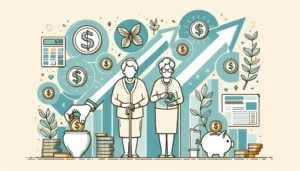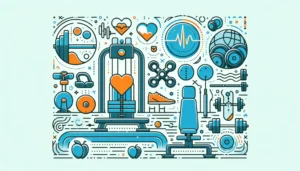Watch
Clip: Long Term Investing Advice to a 7-year-old
The Full Episode
Listen
Read
What You’ll Get Out Of Today’s Show
- It’s the third edition of ChooseFI’s live and interactive show via Stereo. You can submit a question, feedback, or comment, and find out how to join us for the live event by visiting ChooseFI.com/live.
- Brad and Jonathan are getting high on life. Not only have Brad’s daughters started back at in-person school, but he and Laura were also able to attend a Crossfit class together. Meanwhile, Jonathan is successfully combating fatigue by getting the right amount of sleep, cutting out caffeine, and maintaining high hydration levels with juices.
- In an ongoing effort to get 1% better, Brad recently reviewed his credit card bills. He found a $50 recurring charge for his daughter’s saxophone rental and decided to buy it for $500 rather than continue incurring the rental fee. He suggests doing this twice a year and asking if those recurring charges are continuing to serve you.
- Jonathan recently canceled his Netflix subscription and wonders if there is a way to the effort of it and streamline our finances.
- In a hypothetical example of a $2,000 car loan with a 2-3% interest rate, Jonathan asks if Brad would just pay the balance off versus keeping a monthly payment. At that low of an interest rate, Brad would not, but because of the intersection between math and psychology, there are others so debt adverse that they would pay it off.
- For higher interest debt or 8-12% or more, Brad believes that is more of a hair-on-fire scenario in which paying the debt off as quickly as possible would be best.
- Regardless of which side of the scenario you fall on, there is nuance and stigma. Rather than allow others to tell you what you can and can’t do, it’s important to know yourself and why you make the choice you do.
- Understanding the why behind the car payment is a better thought exercise. If it’s because it gives you the cash flow to finance even more stuff, it can grow to become a difficult position is dig yourself out of. Financing allows you to trade your most precious non-renewable resource, time, for more stuff.
- With every dollar you are saving, are you using it to invest, or are you buying more stuff? If you are continuing to buy more stuff, then you are still in the trap and aren’t looking at money as a tool.
- Because Jonathan is a spender, he wants to keep things simple and doesn’t like having structural payments. In the hypothetical scenario, he would feel the need to pay off even a low-interest rate car loan.
- The first listener voicemail wants to know how much in retirement is enough to adequately cover long-term care. His original goal was $10 million at age 65. According to the 4% rule, that would give the listener $400,000 a year to live off of, which is a big number.
- It comes down to what does your life cost? Traditional retirement calculators all start from the point of “what do you earn today”, rather than “what does your life cost”. Your income is irrelevant. In retirement, you need to cover what your life will cost.
- Health care insurance is based on actuarial tables put into place to ensure the provider doesn’t, in aggregate, lose money on you. The same is true for long-term care insurance. It’s priced so that providers don’t lose money on you. What is the effort to reach a $10 million balance to cover the cost of long-term care costing you in terms of time and health now? You can focus on putting systems into place now that give you the best chance to reclaim decades of quality life.
- Rob Phelan, fromThe Simple StartUp, called in with a question about being open to new technologies and investments.
- Brad isn’t a first-mover on anything. However, he has a diverse set of interests and prides himself on knowing when the tipping point is to jump in earlier than the average person. He’s done some reading on non-fungible tokens (NFTs) and believes they could be transformative 10-20 years from now.
- Jonathan’s process is curation and synthesis. When he reads, he skims everything and sees the point when something new becomes real. He’ll do a deep five if it fits into one of the buckets he’s interested in. He’s been doing that deep dive into crypto and blockchain, but not NFTs.
- While neither Brad nor Jonathan can get behind spending $2.5 million for Jack Dorsey’s first Tweet, they do agree digital ownership is interesting because of all the unique ways the concept could be implemented.
- Next up is a seven-year-old who says they want to learn about investing. It starts with saving. What Brad tells his own kids is that life gets so much easier if you can save money. If you spend every cent you earn, it takes away a lot of choices in life and gives them fewer options. The higher you can make your savings rate, the more freedom you’ll have.
- As for investing, think long-term, like many decades of investing. With a long investing horizon, the best chance at being really wealthy is with low-cost broad-based index funds or ETFs.
- When Jonathan’s kids are older, he thinks he will try and attach a real company to the discussion and carve out a portion to invest in it. It would be one they know and has products they get excited about to help make the feeling of ownership real.
- Natalie called in to say that she just opened an M1 Finance account for her traditional IRA contributions as well as a savings account so she can earn 1% on it. However, she’s never done a portfolio rebalance.
- Rebalancing can be scary and easy to avoid. It comes back to having a plan and an investor policy statement and not letting your brain get in the way. M1 can do this automatically and there may be some tax consequences if it is done in a taxable account.
- Rebalance in your portfolio totality, not within individual accounts. If you don’t have a plan, go and figure out what your goals are and have the plan match them. Rebalancing can also be done by making weighted contributions.
- James, who is in Jonathan’s podcasting course, asks about speeding up his path to FI by purchasing multi-family real estate by withdrawing from a 401K and obtaining a HELOC.
- While there are likely both success and horror stories of others who have gone that route, Jonathan would look for ways to avoid 401K withdrawals or taking a line of credit against your home.
- Brad would only go into his 401K as a last resort. 401K withdrawals are subject to a 10% penalty and would be taxed as ordinary income.
- Rather than a 401K withdrawal, Jonathan says that if the deal is good enough, the money will come. Bringing on additional investors may be an alternative. Network, be creative, and try to cap the downside.
Resources Mentioned In Today’s Conversation
- Join the live show Tuesdays at 7:30 Eastern with Stereo!
- ChooseFI Episode 297 From Pandemic Layoff to $100K+ | A Salesforce Success Story
- Start your new language learning journey today with Babbel and get six months for the price of three with promo code “ChooseFI”.
- ChooseFI Episode 016 House Hacking with Coach Carson



